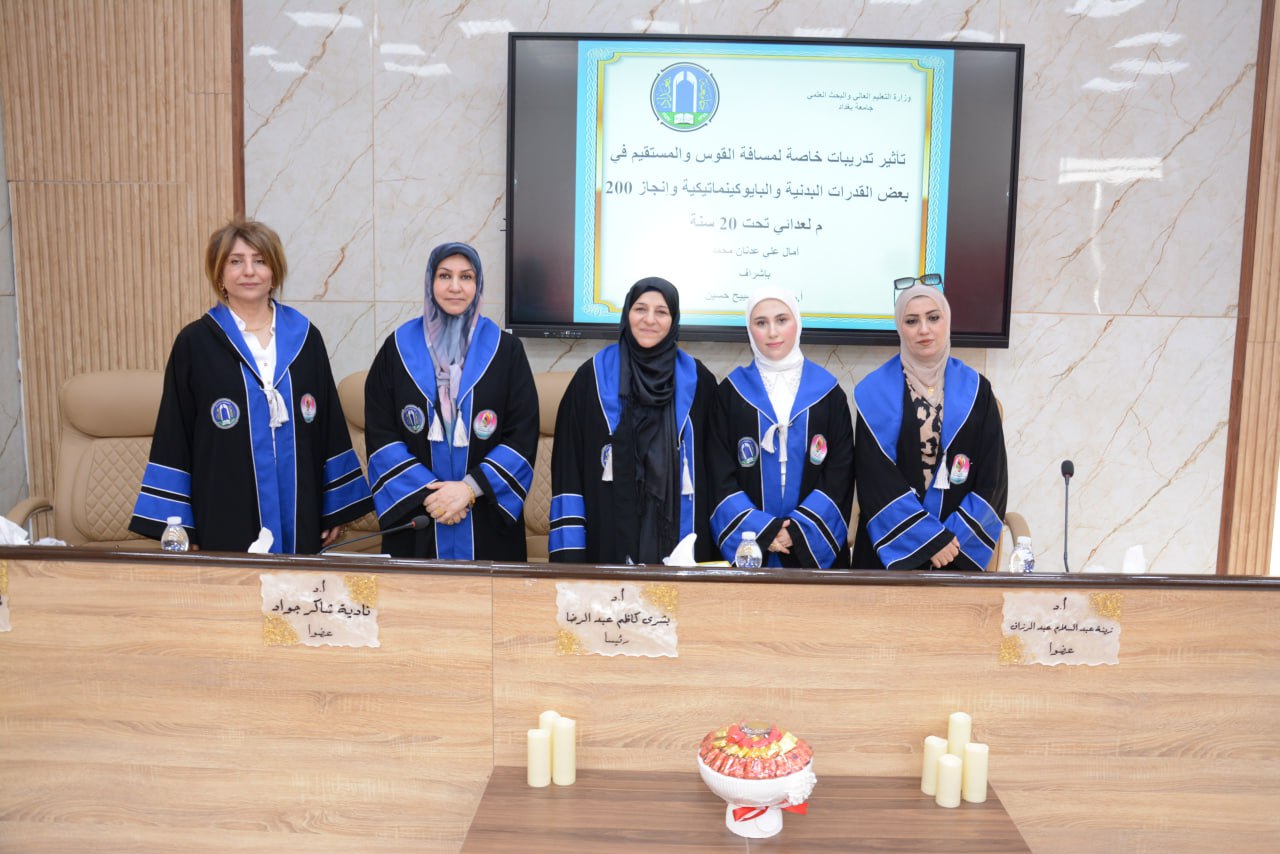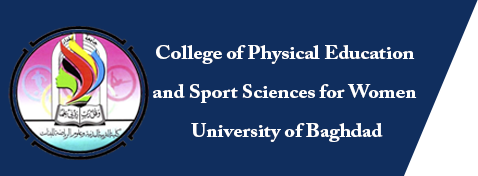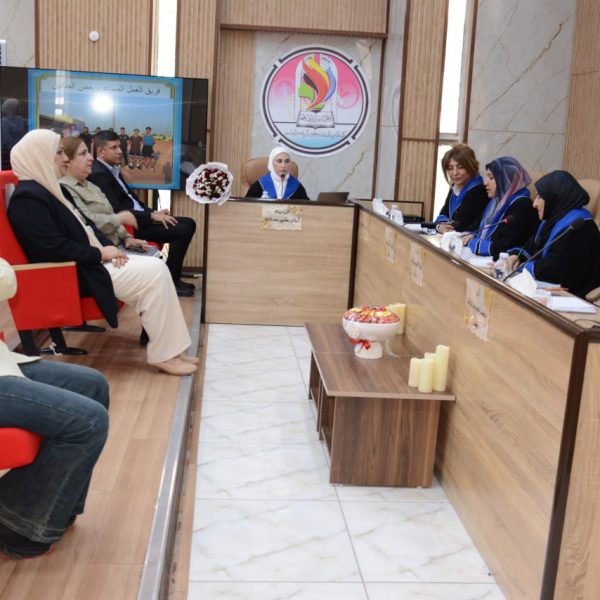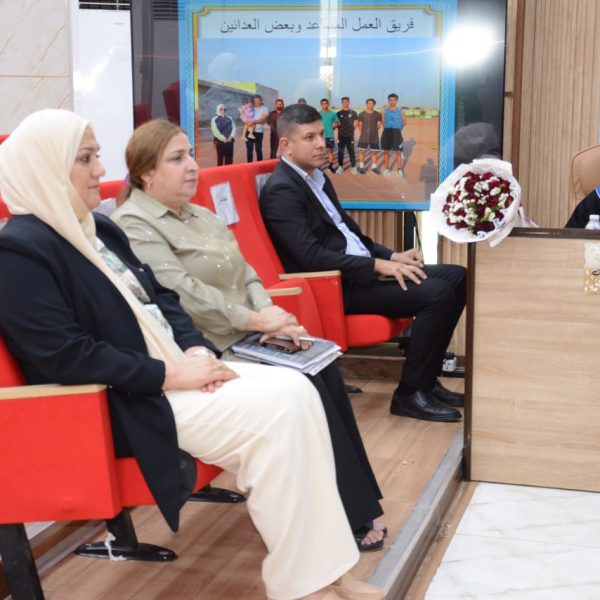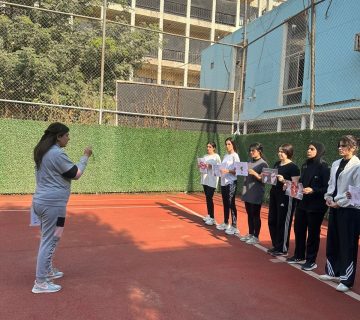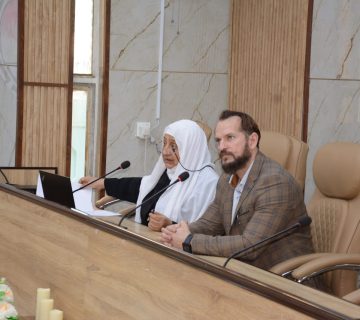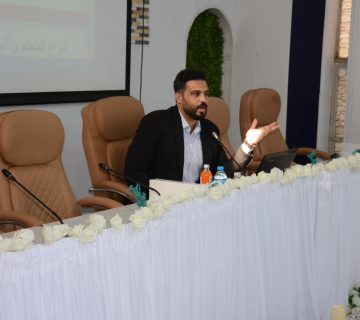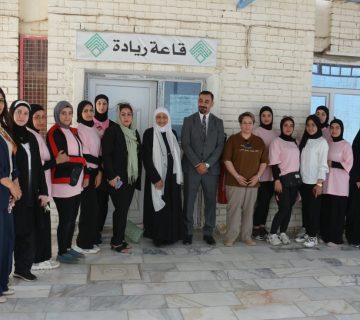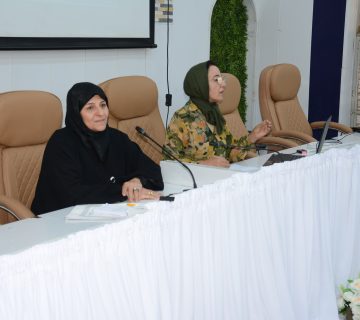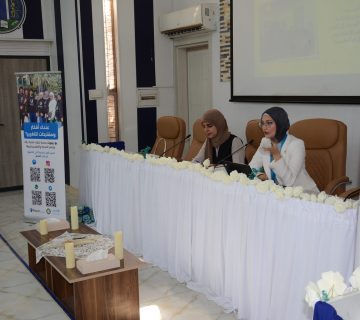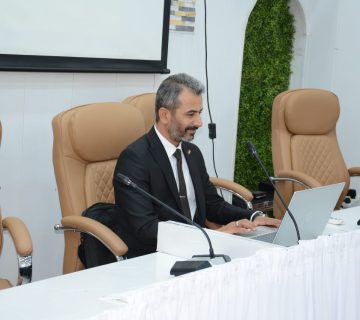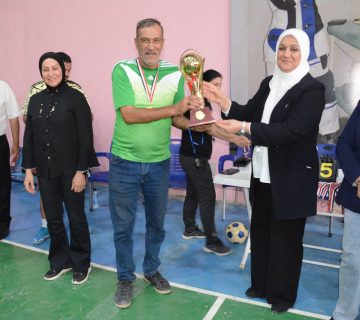The College of Physical Education and Sports Sciences for Women at the University of Baghdad witnessed the discussion of the master’s thesis titled (The Effect of Special Training for Arc and Straight Distances on Some Physical and Biomechanical Abilities and the Achievement of 200m for Runners Under 20 Years), presented by researcher (Amal Ali Adnan).
The examination committee comprised Prof. Dr. Bushra Kazem Abdul Reda, Chair; Asst. Prof. Dr. Iman Sabaih Hussein, Supervisor; Prof. Dr. Nadia Shaker Jawad, External Member (University of Karbala); and Prof. Dr. Zina Abdul Salam, Member.
The study aimed to analyse the 200m race to identify key mechanical variables, particularly stride length and stride frequency, and compare them with the optimal values specified for each runner according to James Hay’s equation. It also sought to design special training for arc and straight distances to improve stride length and frequency—especially during the special speed endurance phase—and to identify the significance of differences between pre- and post-tests, as well as between post-tests for the control and experimental groups in specific trials (60m sitting start, 120m sitting start, 200m sitting start, and 250m sitting start).
The findings showed that special and fundamental sprint drills—such as running short distances, uphill and downhill sprints, and curve running—clearly improved physical and biomechanical abilities and the performance of the 200m event for runners under 20. The study highlighted that this combination of exercises significantly enhanced stride length and frequency in this age group.
Among the key recommendations were fundamental ABC drills and technique-specific exercises to regulate movement patterns for curve and straight distances in the 200m race for runners under 20, due to their importance in developing performance in sprinting and running events. The study also recommended incorporating special and fundamental sprint drills, including uphill, downhill, and curve running, to enhance achievement levels further.
This discussion contributes to achieving Sustainable Development Goal 4 (Quality Education) by supporting research that advances athletic performance and training methods.
